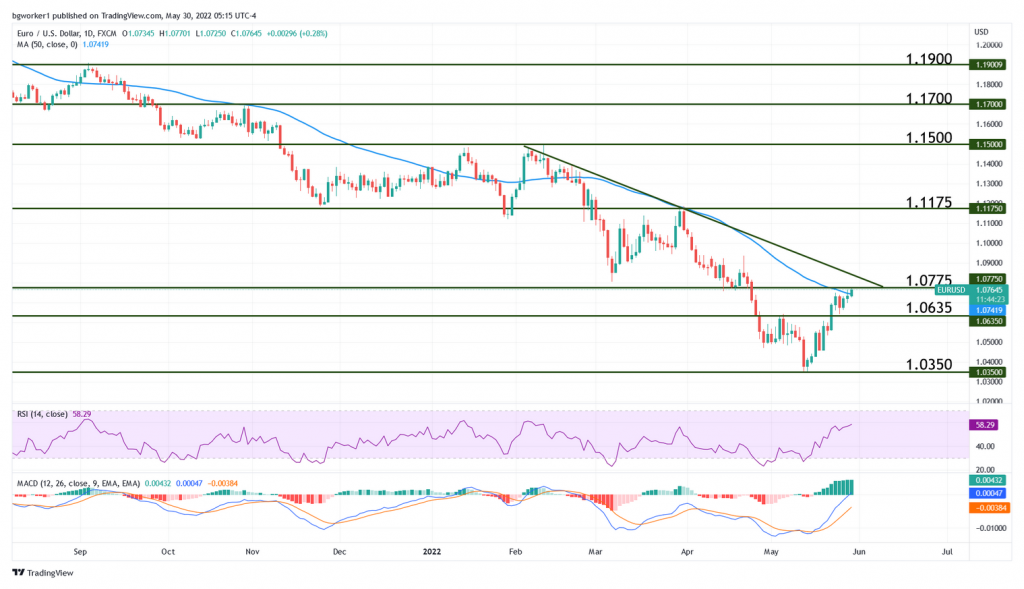EUR/USD Rebounds as ECB Hints Towards July Rate Hike
Non-Farm Payrolls in the Spotlight as the US Dollar Slows Its Ascent
The ECB and the Fed seem to have switched positions in their approach toward interest rates. There is speculation about a pause in Fed rate hikes in September and on the other hand, the European Central Bank is likely to start increasing in July.
The Fed is in a delicate position because a slower pace of the hikes could mean that high inflation will carry on into 2023 but an aggressive pace risks throwing the economy into recession. German inflation numbers are due today, which may add more fuel to the speculation about an ECB rate hike in July.
Key Events for the Week Ahead
Today U.S. banks will be closed in observance of Memorial Day and on the Euro side we have the German Inflation Rate numbers (CPI), scheduled for release at 12:00 pm GMT. The expected reading is 7.6%, up from the previous 7.4% (year over year numbers).
Tuesday at 9:00 am GMT the Eurozone CPI Flash Estimate comes out but its importance is dimmed by the release of the German inflation numbers which takes place today.
Wednesday’s highlight will be the release of the U.S. Manufacturing PMI, scheduled for 2:00 pm GMT. This is a survey of purchasing managers that acts as a leading indicator of economic health with medium-to-high impact.
Thursday at 12:15 pm GMT we take a look at the ADP Non-Farm Employment Change but the more important, government-released Non-Farm Employment report will come out Friday at 12:30 pm GMT. This is the most important jobs data for the U.S. economy and usually has a major impact on the US Dollar due to the close relationship between employment and consumer spending. The forecast is 325K, lower than last month’s 428K.
Technical Outlook – EUR/USD
Since the picture-perfect bounce at 1.0350 support, EUR/USD has traveled almost straight up but for the time being, we cannot talk about a full reversal. Instead, we are still dealing with a rebound, a relief rally generated partly by the overextension of price and partly by the policies of the two central banks (ECB and Fed).
The pair was oversold and the technical indicators showed bullish divergence, which were early signals that a move up will follow. However, considering that the pair is still in a long-term downtrend, we will probably see a resumption of the said trend.
The price has reached a confluence zone created by the 50-day Moving Average, the level at 1.0775, and the bearish trend line seen on the chart. This is a good place for bearish action to resume but the economic data that comes out this week will probably play an important role. Also, any rumors or news about the timing or the pace of the rate hikes will most likely affect the pair’s direction.
